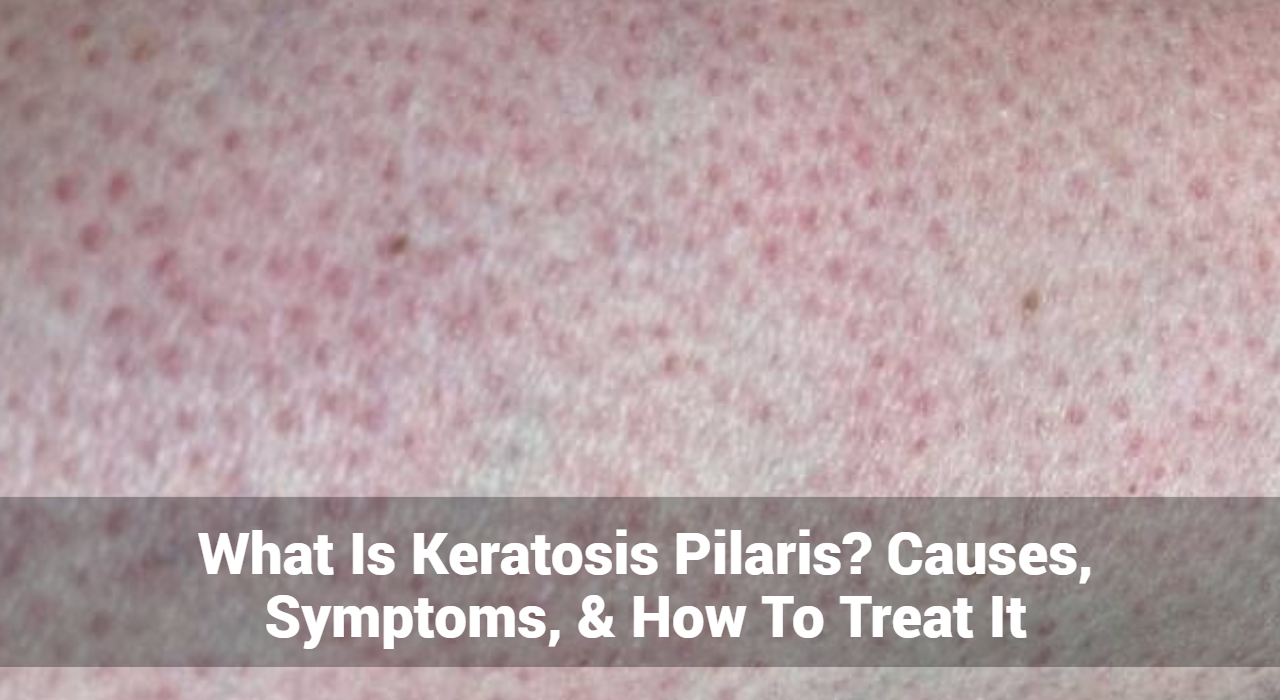What Is Keratosis Pilaris? Causes, Symptoms, & Treatment

Keratosis pilaris (KP), often referred to as “chicken skin,” is a common and benign skin condition that manifests as small, rough bumps on the skin. Despite its prevalence, it is frequently misunderstood, and its impact on those affected can range from purely cosmetic to a source of discomfort. This comprehensive guide explores keratosis pilaris in detail, including its causes, symptoms, and treatment options.
What Is Keratosis Pilaris?
Keratosis pilaris is a skin condition characterized by the appearance of small, gooseflesh-like bumps that often give the skin a rough texture. These bumps are caused by the accumulation of keratin, a protein found in the skin, in hair follicles. The condition is typically harmless and not associated with any underlying health problems, but it can be cosmetically concerning for many people.
KP commonly affects areas where hair follicles are present, such as the upper arms, thighs, buttocks, and sometimes the face. It is not contagious and generally does not pose any health risks.
What Causes of Keratosis Pilaris?
The exact cause of keratosis pilaris is not fully understood, but several factors are believed to contribute to its development:
- Hereditary Factors: KP often runs in families, suggesting a genetic predisposition. If your parents or siblings have KP, you might be more likely to develop it.
- Excess Keratin Production: The primary cause of KP is the overproduction of keratin, which clogs the hair follicles. This buildup forms the characteristic bumps on the skin.
- Associated Conditions: KP is often seen in conjunction with other skin conditions, such as eczema or dry skin. People with these conditions may be more prone to developing KP.
- Hormonal Influences: Changes in hormone levels, particularly during puberty or pregnancy, may exacerbate the condition, although KP can occur at any age.
- Dry Skin: Cold weather and low humidity can lead to dry skin, which may worsen the appearance of KP. Conversely, warmer weather often improves skin texture.
Track and Manage your Eczema treatment using a comprehensive Eczema App
Download Eczemaless now
What Are The Symptoms of Keratosis Pilaris?
Keratosis pilaris typically presents with specific symptoms that make it identifiable:
- Appearance: The most common symptom is the presence of small, round bumps that can be white, red, or skin-colored. These bumps are usually found on the upper arms, thighs, buttocks, and sometimes the face.
- Skin Feel: The affected areas of the skin often feel rough or gritty to the touch, similar to sandpaper.
- Accompanying Sensations: The bumps may be accompanied by dry or itchy skin, although KP itself is usually not painful.
- Aesthetic Impact: While KP is harmless, many individuals seek treatment due to its cosmetic appearance, which can affect self-esteem and confidence.
- Harmless Nature: KP does not cause pain, swelling, or significant discomfort, although the cosmetic impact may be distressing for some.
What Are The Treatment Options for Keratosis Pilaris?
While keratosis pilaris cannot be cured, various treatments can help manage and improve the appearance of the skin. Treatment options include:
Topical Treatments
- Exfoliating Agents: Products containing exfoliating ingredients can help remove dead skin cells and reduce the buildup of keratin. Commonly used exfoliants include:
- Salicylic Acid: Helps to break down keratin plugs and reduce inflammation.
- Alpha Hydroxy Acids (AHAs): Lactic acid or glycolic acid can gently exfoliate the skin and improve texture.
- Urea: Hydrates and softens the skin, making it easier to slough off dead cells.
- Retinoids: Topical retinoids, such as tretinoin, can help unclog hair follicles and improve skin cell turnover. These are available by prescription and should be used under a dermatologist’s guidance.
Moisturizers
- Hydrating Creams: Regular use of moisturizers can help alleviate dryness and improve the appearance of KP. Look for products with ingredients like:
- Ceramides: Help restore the skin barrier and retain moisture.
- Hyaluronic Acid: Provides deep hydration and improves skin texture.
- Glycolic Acid: A mild exfoliant that also acts as a moisturizer.
Laser Therapy
- Targeted Treatments: Laser treatments can be used to reduce redness and improve skin texture by targeting and destroying the excess keratin and inflammation. This option is usually considered for more severe cases or when other treatments have not been effective.
Chemical Peels
- Professional Peels: Chemical peels performed by dermatologists can help exfoliate the top layer of skin, improving texture and appearance. Peels containing salicylic acid, glycolic acid, or lactic acid can be beneficial.
Lifestyle Adjustments
- Regular Exfoliation: Incorporating gentle exfoliation into your skincare routine can help manage KP. Avoid harsh scrubbing, which can irritate the skin.
- Hydration: Maintaining adequate hydration by drinking plenty of water and using moisturizing products helps keep the skin healthy and less prone to dryness.
Home Remedies
- Natural Exfoliants: Some people find relief with natural exfoliating remedies, such as sugar scrubs or oatmeal baths. However, these should be used cautiously to avoid skin irritation.
GET IN CONTROL OF YOUR ECZEMA
Use our AI tool to check the severity of Eczema and keep track of your Eczema progress.
Diagnosis of Keratosis Pilaris
Diagnosing keratosis pilaris is typically straightforward, based on visual examination and patient history. Consult a dermatologist may use the following methods to confirm the diagnosis:
- Physical Inspection: The dermatologist will inspect the skin for the characteristic bumps and rough texture associated with KP.
- Patient Background: Discussion of symptoms, family history, and any related skin conditions helps in making an accurate diagnosis.
- Ruling Out Other Conditions: In some cases, a dermatologist may need to differentiate KP from other skin conditions that present with similar symptoms, such as acne or folliculitis.
- Biopsy: A skin biopsy is rarely necessary but may be performed if the diagnosis is uncertain or if there are unusual symptoms.
Preventing Keratosis Pilaris
While keratosis pilaris cannot be completely prevented, certain measures can help minimize its appearance and reduce flare-ups:
- Hydration: Keep your skin well-moisturized to prevent dryness, which can exacerbate KP. Use thick, hydrating creams or lotions, especially during colder months.
- Gentle Products: Use mild, non-irritating skincare products that do not strip the skin of its natural oils.
- Avoid Over-Exfoliation: Exfoliate the skin gently to prevent irritation. Over-exfoliating can lead to further inflammation and worsening of KP.
- Sunblock: Protect your skin from excessive sun exposure, which can worsen skin dryness and irritation.
- Associated Skin Conditions: If you have other skin conditions like eczema or psoriasis, managing these effectively can help reduce the impact of KP.
Conclusion
Keratosis pilaris is a common and generally harmless skin condition characterized by small, rough bumps caused by the buildup of keratin in hair follicles. While it cannot be cured, effective management through topical treatments, moisturizers, and lifestyle adjustments can significantly improve skin appearance and texture. Consulting a dermatologist can provide personalized treatment options and guidance, especially for more severe cases or when standard treatments are ineffective. By understanding the causes, symptoms, and treatment options, individuals with KP can take proactive steps to manage their condition and enhance their skin health.
Track and Manage your Eczema treatment using a comprehensive Eczema App
Download Eczemaless now



